The first time I planted what I thought was milkweed was 8 years ago, in an attempt to create a flower patch.
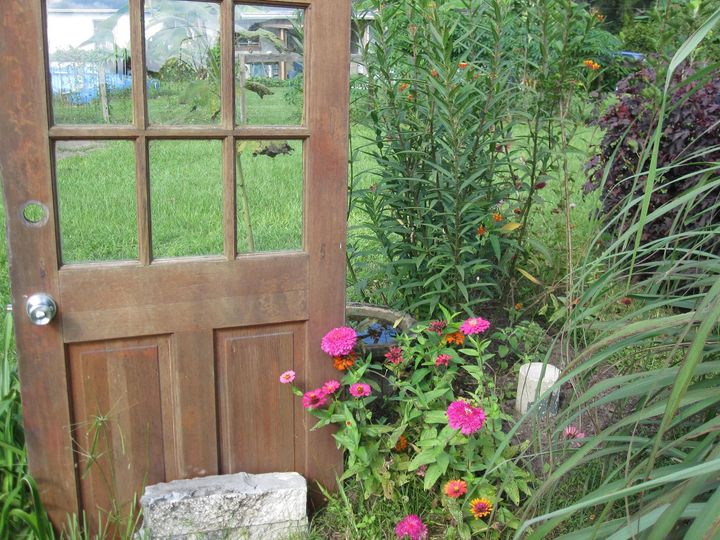 As you can see, I’m no master gardener. Like, seriously what was I thinking with standing a door in the middle of a garden? In my mind the concept really looked magical… in practicality, well, beauty is in the eyes of the beholder – this would have worked better in a different location. As you may imagine, the door is long gone and so is the flower patch. It taught me a lesson: gardening is about transforming, changing, and creating… so let me come back to the main topic Monarchs and Butterfly Weeds.
As you can see, I’m no master gardener. Like, seriously what was I thinking with standing a door in the middle of a garden? In my mind the concept really looked magical… in practicality, well, beauty is in the eyes of the beholder – this would have worked better in a different location. As you may imagine, the door is long gone and so is the flower patch. It taught me a lesson: gardening is about transforming, changing, and creating… so let me come back to the main topic Monarchs and Butterfly Weeds.
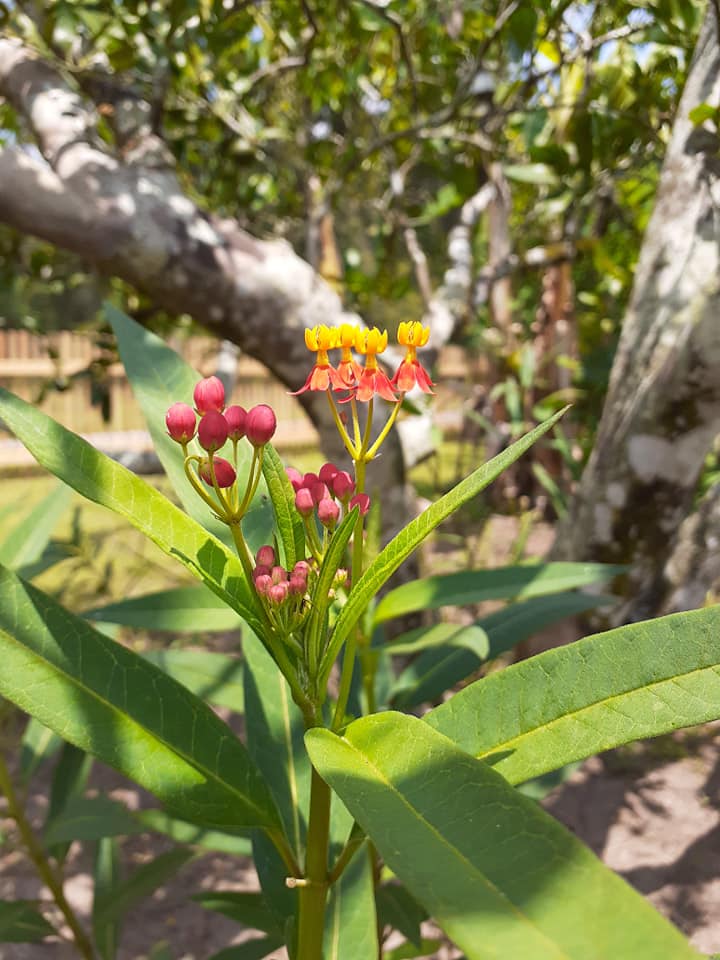 |
 |
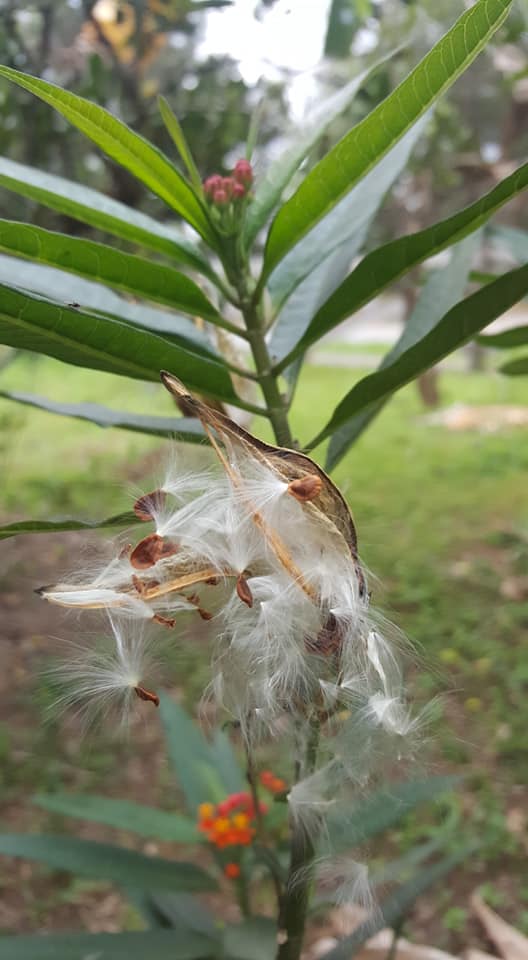 |
Recently, (meaning this year) I learned that the plant I was growing, was NOT common milkweed – in fact it’s Butterfly Weed – in the milkweed family. The difference between Milkweed and Butterfly weed is mostly seen in the color and height; common milkweed has purplish pink flowers, while the blooms of butterfly weed are orange and/or red and is a much smaller plant growing up to 3 feet (based from what I’ve seen in our garden). The butterfly weed still did the job and attracted the Monarch Butterfly. Next year I hope to grow the Common Milkweed to have variety.
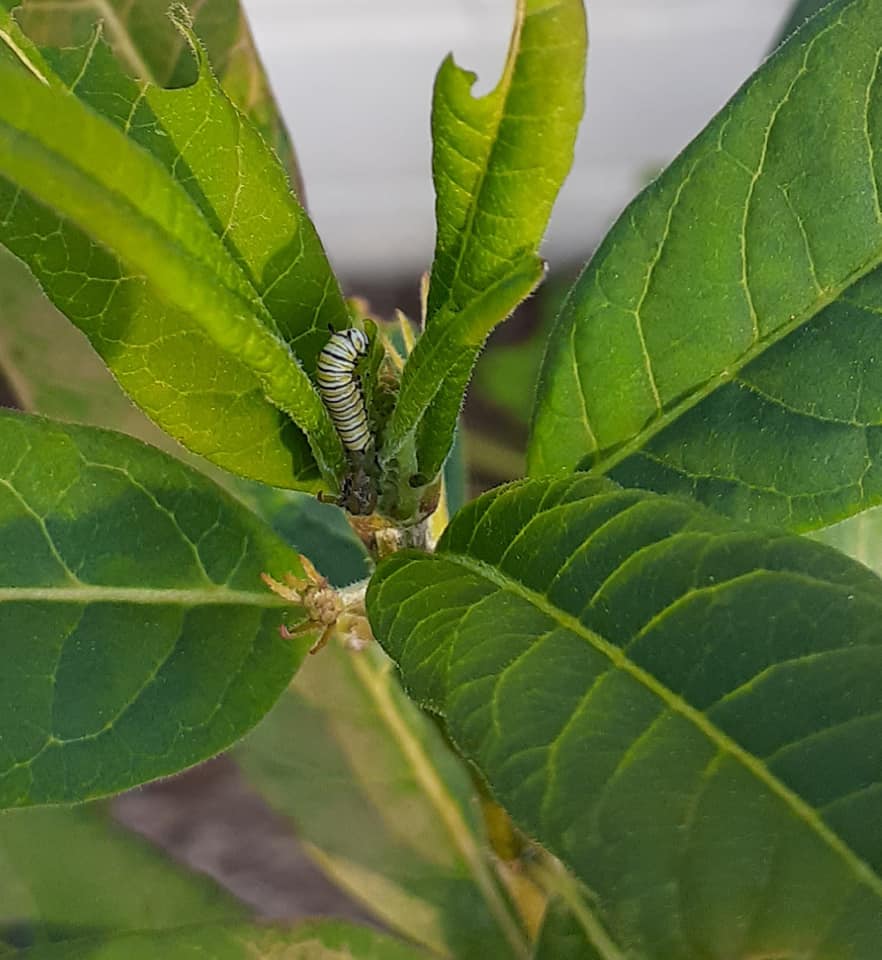 |
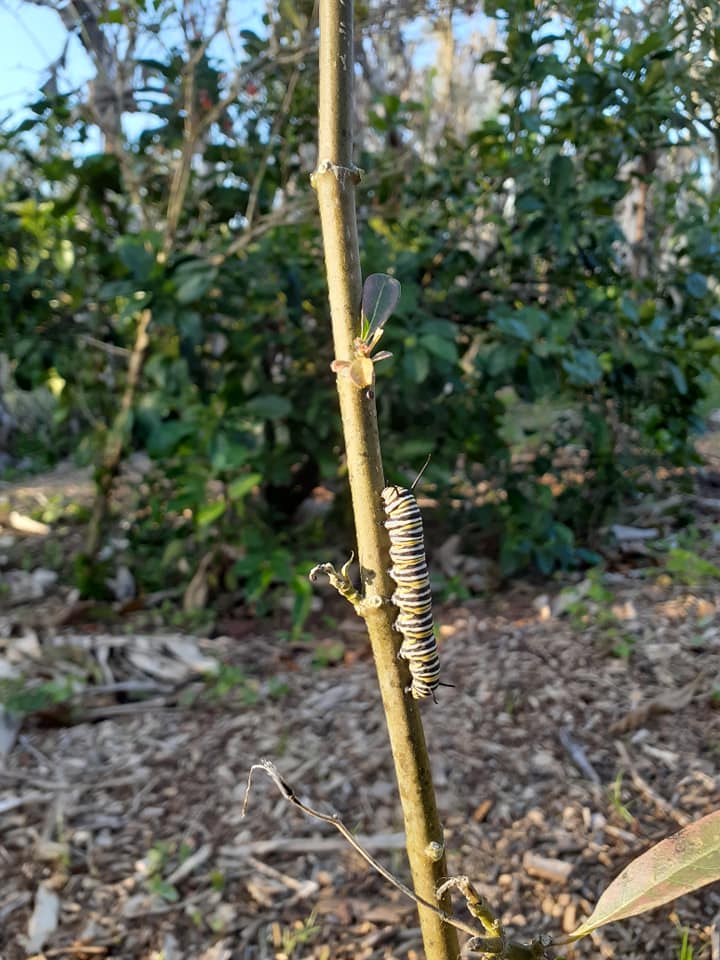 |
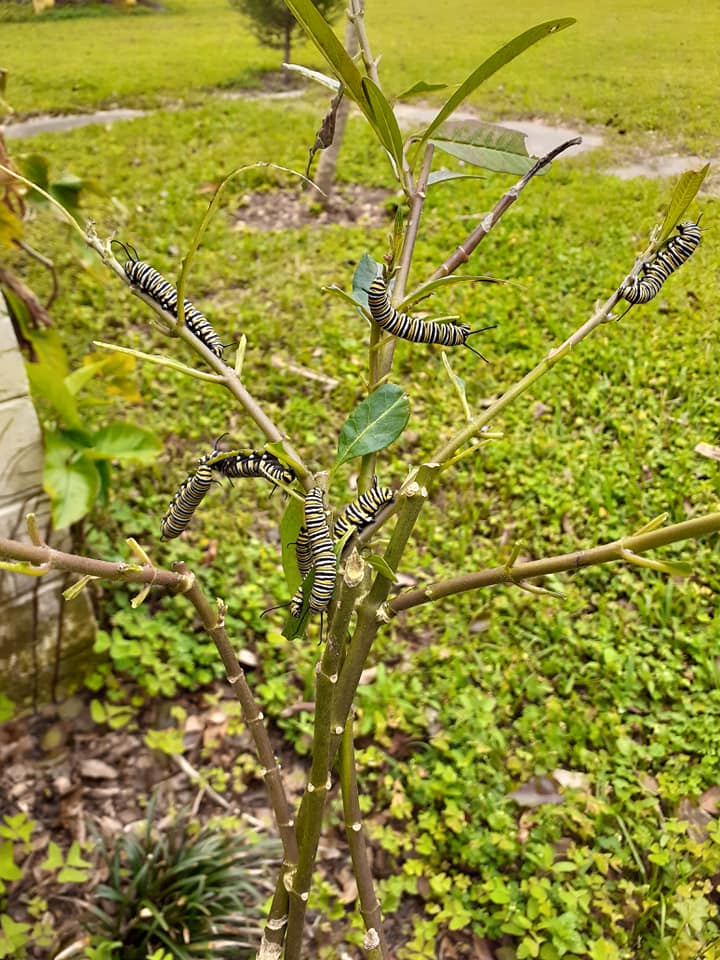 |
This year has been a gift when it comes to this particular aspect of my life which is: learning from Nature, and I appreciate the wisdom I’ve gained from observing the life cycle of the Monarch Butterfly. This year I truly had the blessing of seeing this happen and I’m delighted to share it.
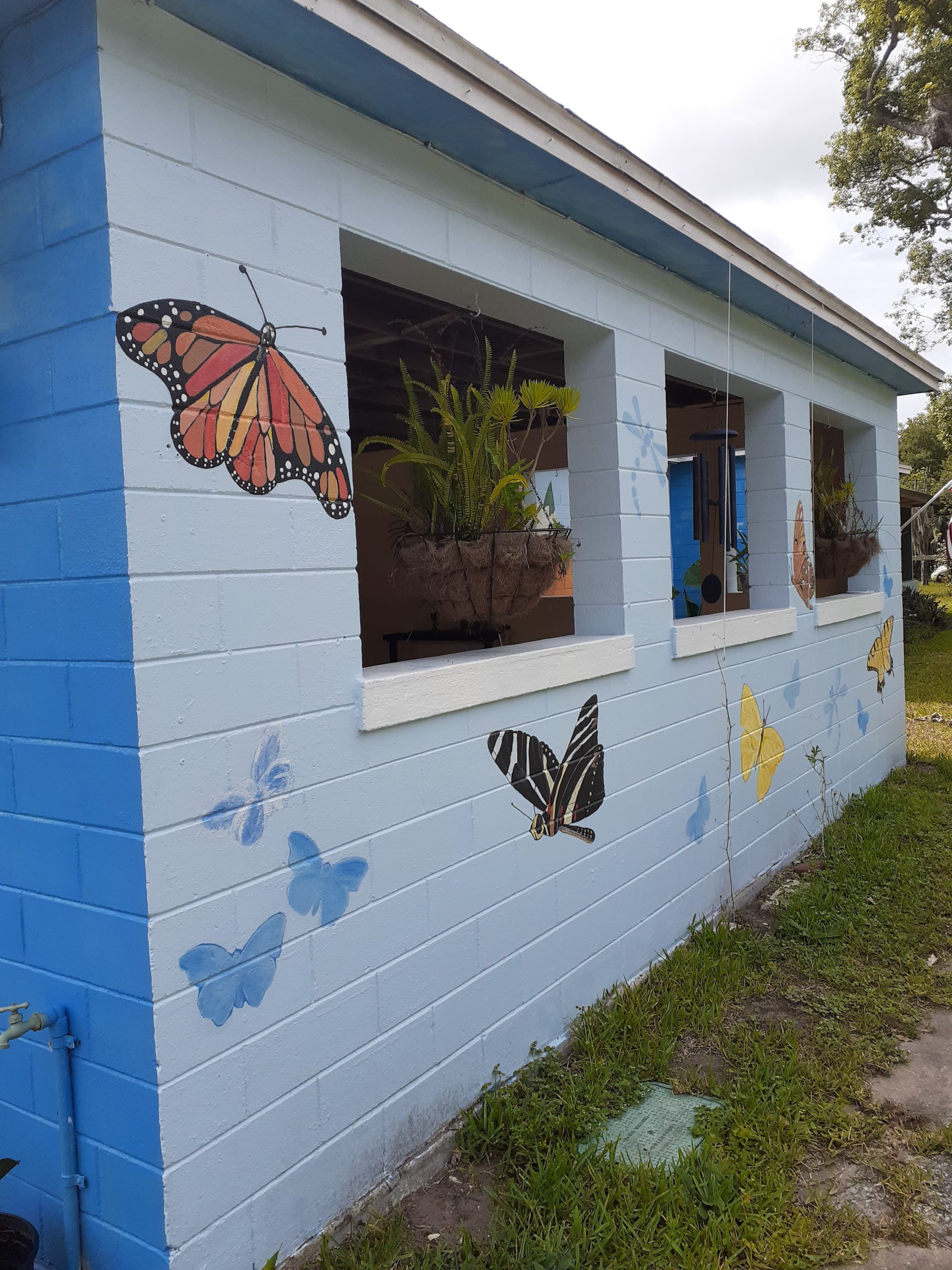
Shortly after the Butterfly Weed bloomed, the Monarch Caterpillars showed up…. from where? I don’t know. All I know is, I noticed several of them chewing on the leaves until all that was left was a stem. (click on boxes below for little video clip)
The monarch caterpillars ate all the leaves off the butterfly weed and moved on to their next stage of finding their transformation sites. I didn’t make much fuss until several days later while weeding around the Butterfly Weed I noticed a Monarch Chrysalis, the cutest thing ever. It is the sweetest color green and had ‘gold’ shiny dots… like is it really gold?
That got me curious to see if I could locate more… I took a moment to do a bit of research on the internet and most articles on the topic stated that the caterpillar would travel as far as 15 feet or so to create its chrysalis to move into its pupa stage.
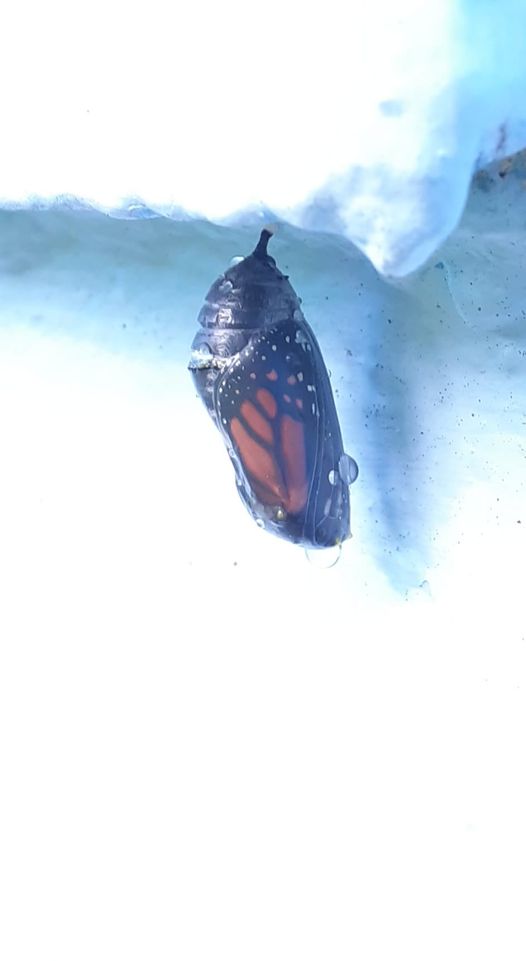
Like magic, knowing now what to look for I was seeing them in different places… on the wall, on stems and under various leaves. You will observe in one of the pictures you can actually see through the chrysalis and it is no longer green… it’s see through; you can see the black and orange that are trademark colors for the Monarchs.
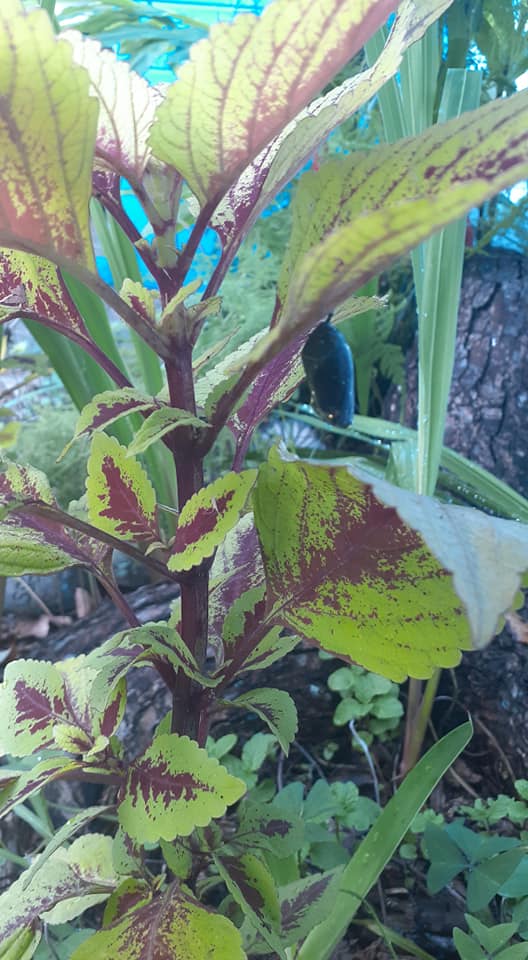 |
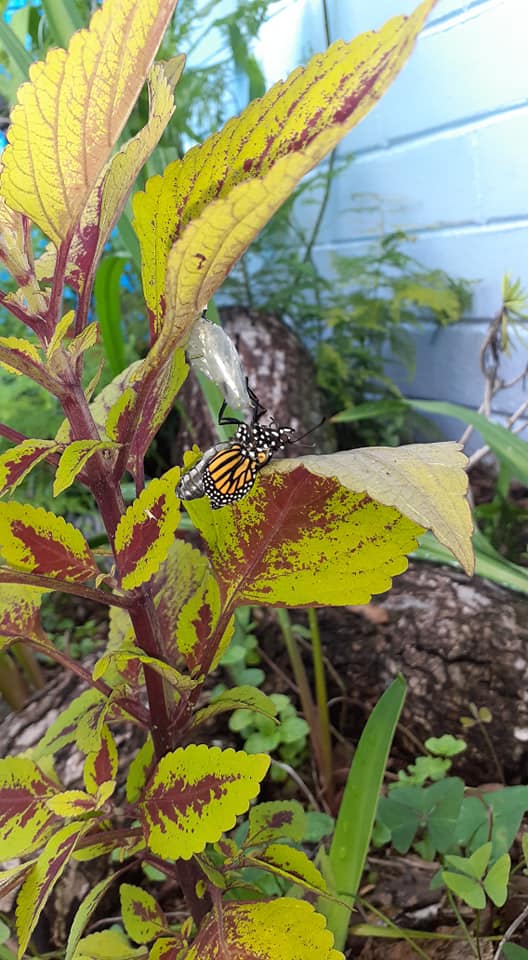 |
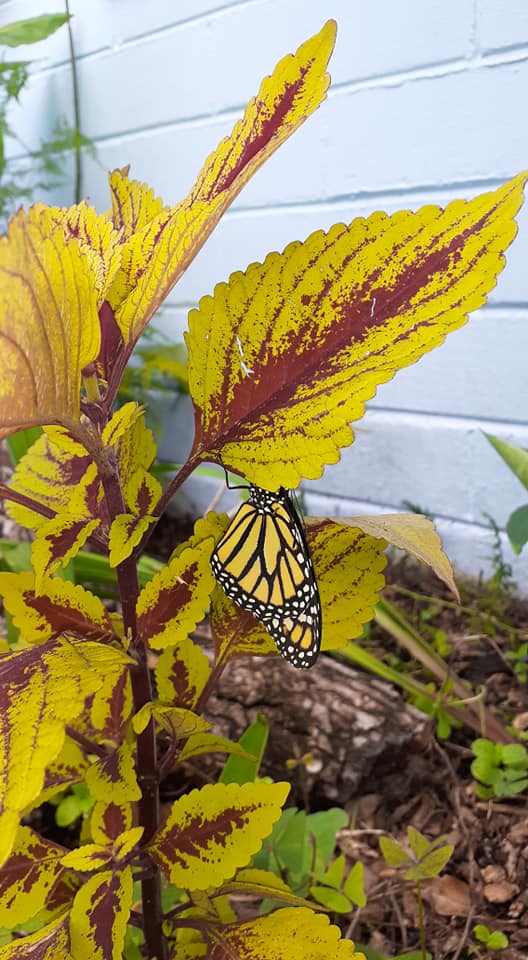 |
Slowly one by one they began to emerge, one of them was in an area totally unexpected over 30 feet away from the milkweed plant. By the water spigot. So another lesson I learned…. once you see that the milkweed or butterlfy weed leaves have been devoured, be extra cautious with the vegetation around the area as the caterpillars will form their Chrysalis not too far away.
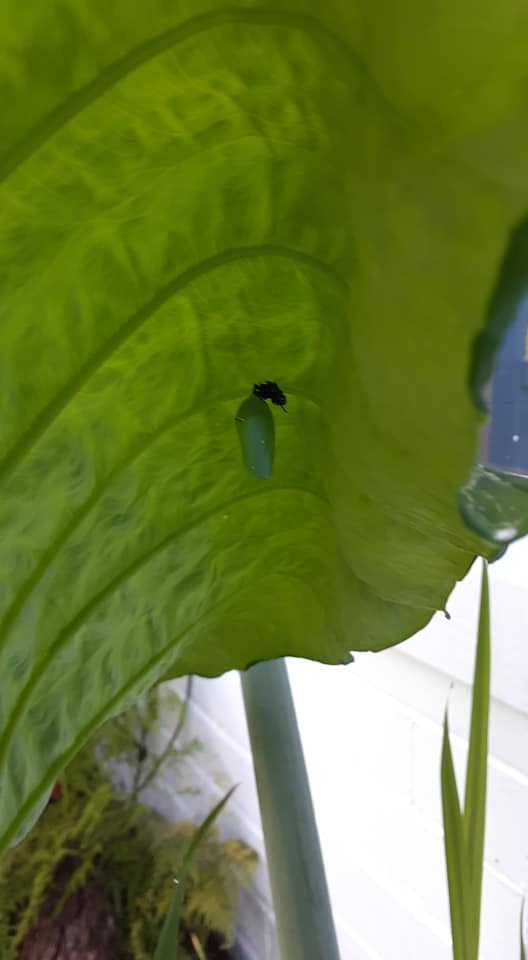 |
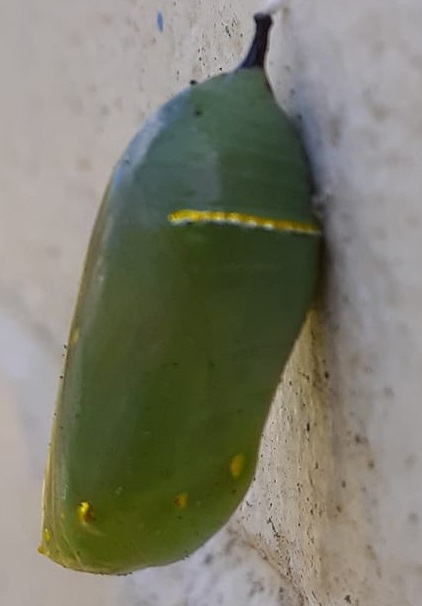 |
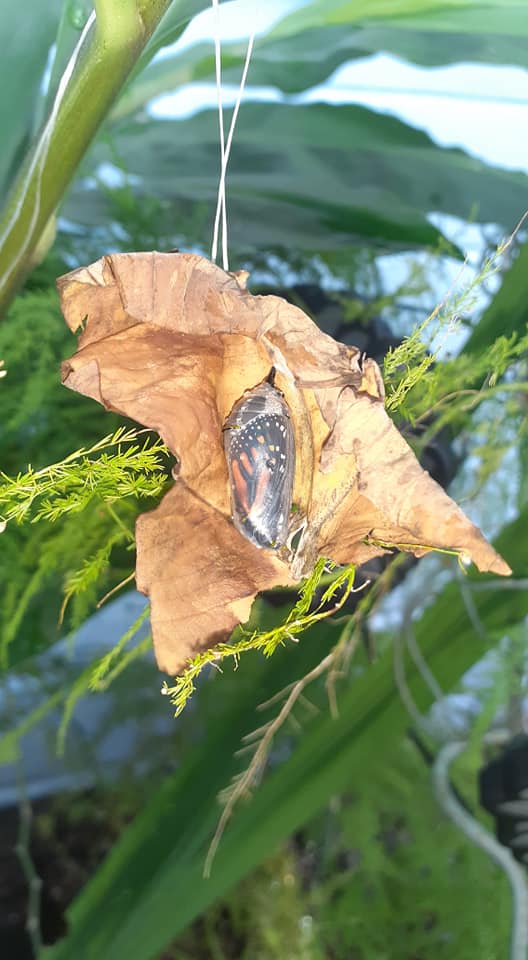 |
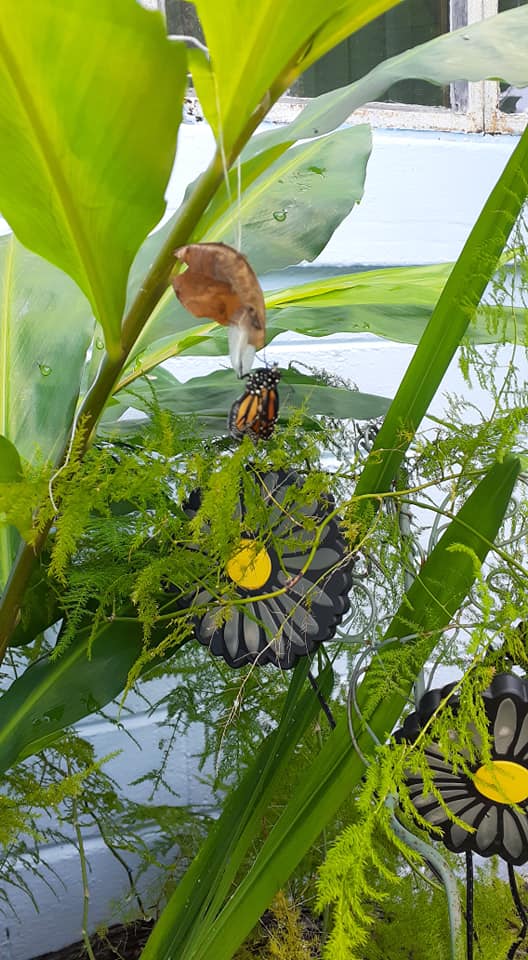 |
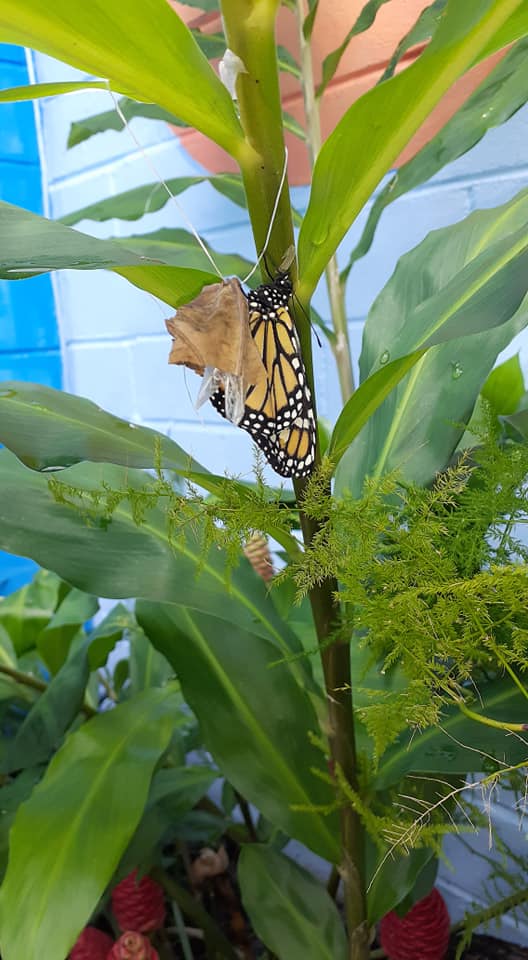 |
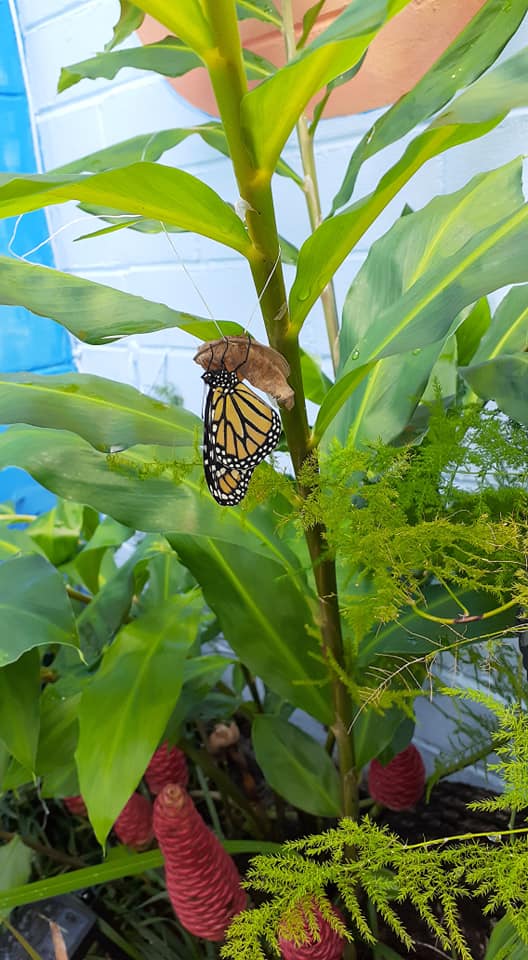 |
If you notice in one of the pictures, there is a string. Well, I cut the elephant ear plant and little did I know that it had a chrysalis attached on the underside… as I was picking up the clippings I noticed it and since it was securely attached, I simply put a string through the cut portion of the leaf and I hung it. Mind you… I was worried because I did not take into account that the leaf would eventually dry out – as you can see in the picture – it did.
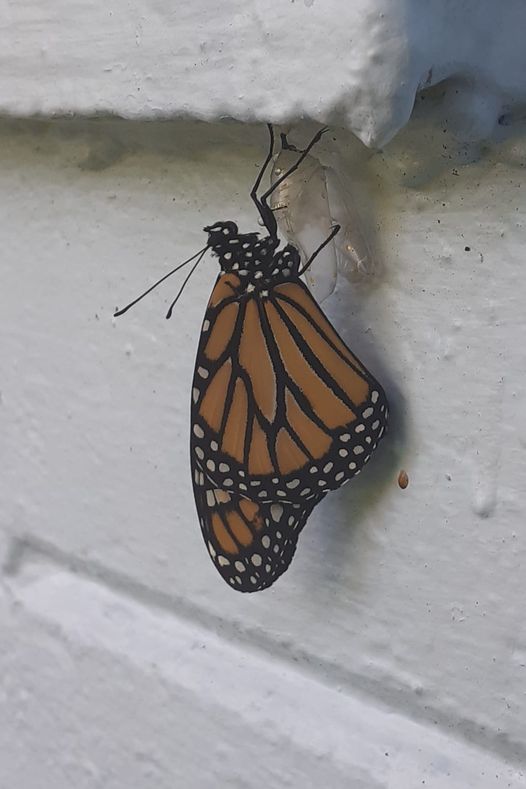
If you are a butterfly (specially Monarch Butterfly) enthusiast you are loving the pictures. It was exciting to keep seeing one by one come out and begin unfurling their wings. The one that was attached to the drying leaf had to do a lot of acrobatics to get from under it and stretch its wings.
I’m very pleased that I was able to rescue the one so it can continue on its Journey. I also spotted two monarch chrysalis side by side, I called those the “twins” and slowly they also emerged.
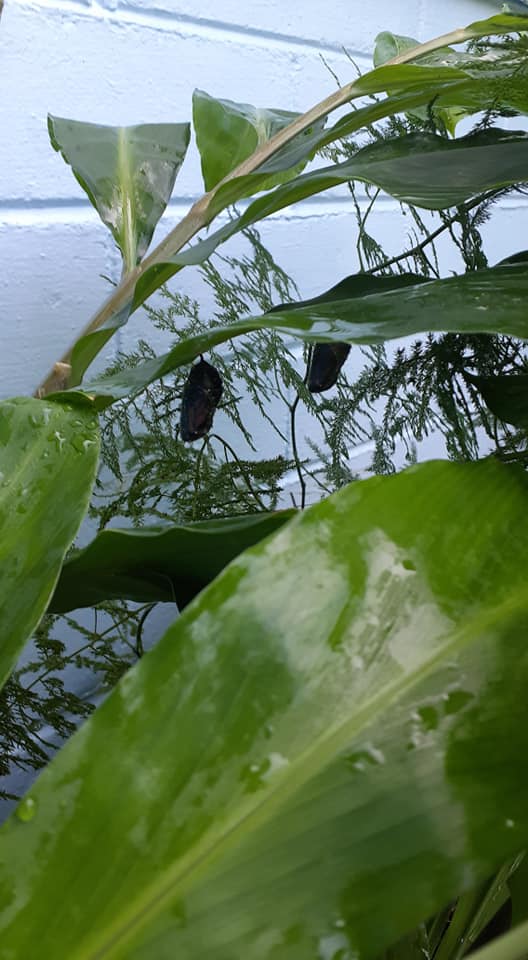 |
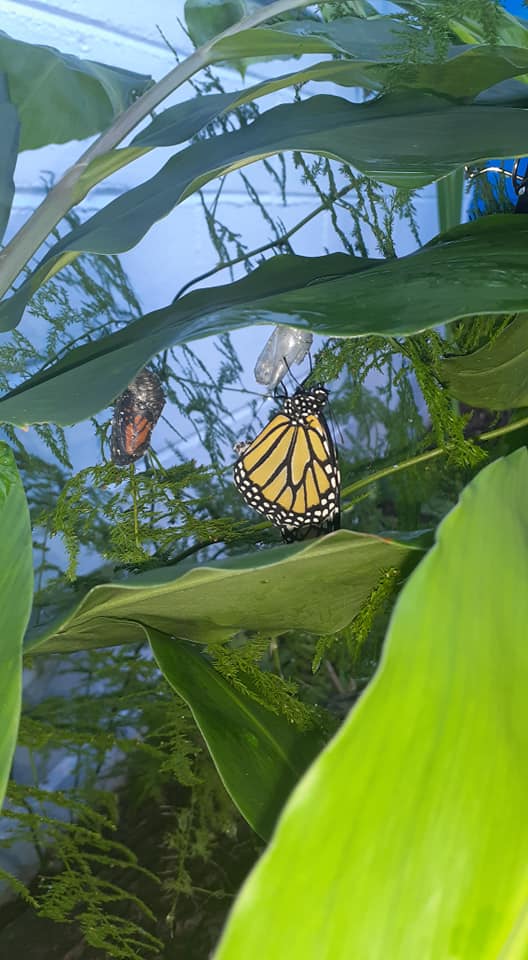 |
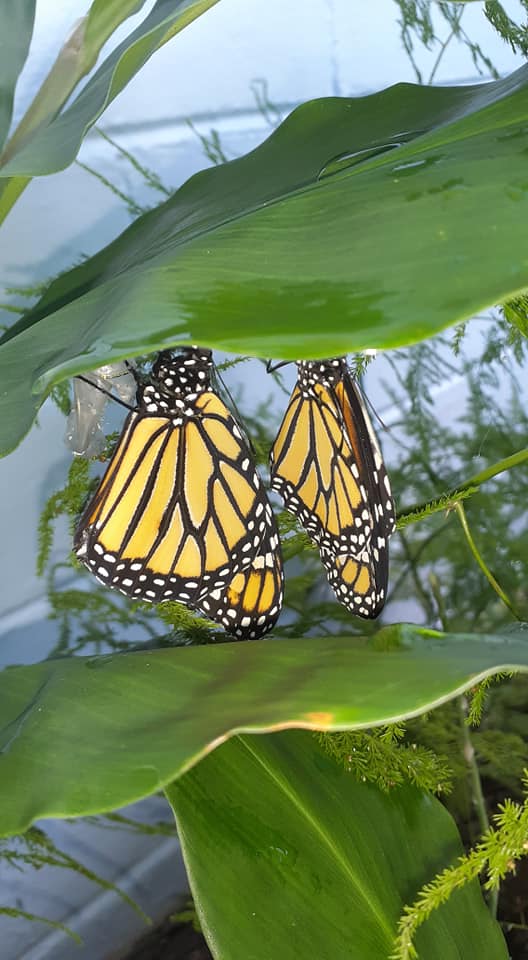 |
I felt like I had been in the Monarch Butterfly maternity ward all day. The interesting thing to me is that ever since I painted the buttefly mural on the house, these little beings are fluttering everywhere around the garden. Coincidence? We’ll never know.
You can follow my garden community on facebook social media at The Backyard Garden.
